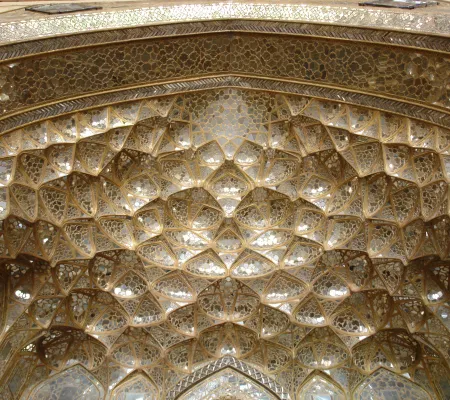This talk explores the aesthetics, semiotics, and sensorium of mirror-clad palaces built in seventeenth-century Isfahan, Iran. Sheathed in minute pieces of mirror, meticulously arranged in intricate patterns, these edifices were infused with their own fragmented images during the day; yet they would have been equally resplendent at night, during nocturnal festivities, when myriad lamps and torches were lit in and around them. These palaces owed their distinctive revetments to the mobility of materials in the early modern world. Traditionally, mirrors were made from metals, but beginning in the seventeenth century, Venetian looking glasses were imported in large quantities and glass mirrors were locally manufactured. This presentation examines the emergence and development of this decorative mode in the palace architecture of Safavid Iran (1501-1722). The significance of these glittering palaces, Emami argues, lay in their phenomenological and semiotic dimensions alike: they afforded a form of exuberant sensuality that resonated with the taste of the era while also evoking the archetypical palace of the prophet-king Solomon.
Bio: Dr. Farshid Emami specializes in the history of architecture, urbanism, and the arts in the Islamic lands, with a focus on the early modern period and particularly Safavid Iran. His scholarly interests include global histories of early modernity, interactions of architecture and literature, social histories of the arts, and artistic exchange in the Persianate lands and beyond.


